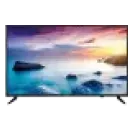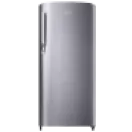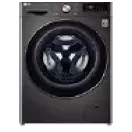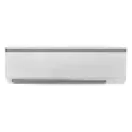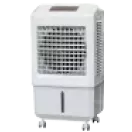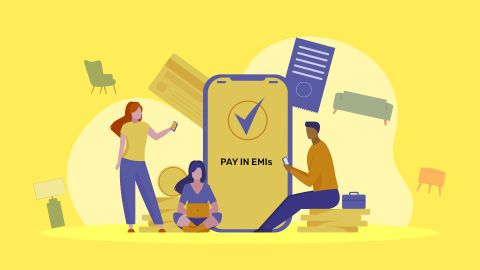Sewing machines are useful tools for anyone who wants to make, fix, or design clothes and fabric items. They help save time and give neat, strong stitches. People use them at home for crafts, in schools for learning, or in shops for tailoring and fashion work. Electric sewing machines are especially popular because they use a motor to move the needle, making sewing faster and easier. Many models come with built-in stitch patterns, speed control, and a foot pedal for smooth use. Some even have automatic threading and buttonhole features. These machines are great for beginners and professionals alike.
Types of sewing machines and their uses
Here is a helpful breakdown of the main types of sewing machines and what they are best used for:
- Manual sewing machine: Operated by a hand crank, the manual sewing machines are simple and durable, but slow. Best for basic stitching and areas without electricity.
- Mechanical sewing machine: Uses a foot pedal and knobs to control stitch type and length. Ideal for beginners and home users doing basic repairs or projects.
- Electronic sewing machine: The electric sewing machines are powered by electricity with buttons or dials for stitch selection. Offers more features like built-in stitches and speed control. Great for hobbyists.
- Computerised sewing machine: Controlled by a digital interface. Offers hundreds of stitch patterns, memory functions, and even USB connectivity. Best for advanced users and professionals.
- Quilting machine: Built for sewing multiple fabric layers. Features a larger work area and special feet for free-motion quilting. Great for quilting enthusiasts.
- Mini or portable sewing machine: The mini sewing machines are lightweight and compact. Good for small repairs, travel, or beginners. Limited stitch options.
- Industrial sewing machine: Built for high-speed, long-term use. Often specialised (e.g., buttonhole, bar tack, or flat seam). Used in factories and tailoring businesses.
Key features and specifications to look for in a sewing machine
Feature
|
Description
|
Built-in stitches
|
Includes multiple stitch options like straight, zigzag, and decorative stitches for versatility.
|
Automatic needle threader
|
Saves time by effortlessly threading the needle.
|
Adjustable stitch length and width
|
Offers better control over stitch customisation.
|
Buttonhole function
|
Enables easy creation of buttonholes in a single step.
|
Drop-in bobbin system
|
Simplifies threading and prevents jamming issues.
|
Speed control
|
Allows adjustment of sewing speed for precision work.
|
Free arm
|
Useful for sewing cuffs, collars, and pant hems.
|
Portable design
|
Lightweight models are easy to move and store.
|
LED lighting
|
Illuminates the work area for better visibility.
|
Essential sewing machine tips
- Keep your machine clean and well-maintained to ensure smooth operation.
- Use the appropriate needle and thread for different fabrics and projects to avoid damage.
- Practice threading and stitching on scrap fabric to master your machine's settings.
- Adjust tension and stitch length according to your fabric and desired outcome.
- Invest in quality accessories like extra bobbins and presser feet for added versatility.
- Take breaks to prevent fatigue and maintain concentration during long sewing sessions.
- Refer to your machine's manual for troubleshooting and maintenance tips.
Also explore Best sewing machine for home and Usha sewing machine to make the best choice.
Price list of popular sewing machine brands
Brand
|
Price range
|
|
Rs. 6,000 - Rs. 20,000
|
Singer
|
Rs. 7,000 - Rs. 25,000
|
Brother
|
Rs. 8,000 - Rs. 30,000
|
Janome
|
Rs. 10,000 - Rs. 35,000
|
Bernina
|
Rs. 15,000 - Rs. 50,000
|
Disclaimer: The features, availability, and pricing of each model are subject to change and may vary. For the most accurate and up-to-date information, please visit the official website.
Before you decide, explore the latest offers. You may find a great deal on a model that matches your needs.
Get sewing machines on Easy EMIs with Bajaj Finserv
Bringing home your preferred sewing machine is now hassle-free with Bajaj Finserv’s flexible financing options. Follow these simple steps to buy your preferred sewing machine on Easy EMIs:
- Explore models on Bajaj Mall: Browse through a wide selection of sewing machines on Bajaj Mall. Compare features to find a model that meets your needs.
- Visit a partner store: Once you have shortlisted a model, head to any of Bajaj Finserv’s 1.5 lakh partner stores across 4,000 Indian cities. View the product in person and take expert help if needed before making a final decision.
- Choose the Easy EMI Loan option: At checkout, opt for the Bajaj Finserv Easy EMI Loan. Get financing of up to Rs. 5 lakh and convert your purchase into affordable EMIs. Select models may also be available with zero down payment.
- Check your loan eligibility online: To make the process smoother, check your pre-approved loan limit online by entering your mobile number and OTP. This gives you clarity on how much you can borrow before visiting the store.
- Use the EMI Network Card for purchases up to Rs. 3 lakh: If you own the Bajaj Finserv EMI Network Card, use it to split payments of up to Rs. 3 lakh into monthly instalments—no paperwork, no delays.
